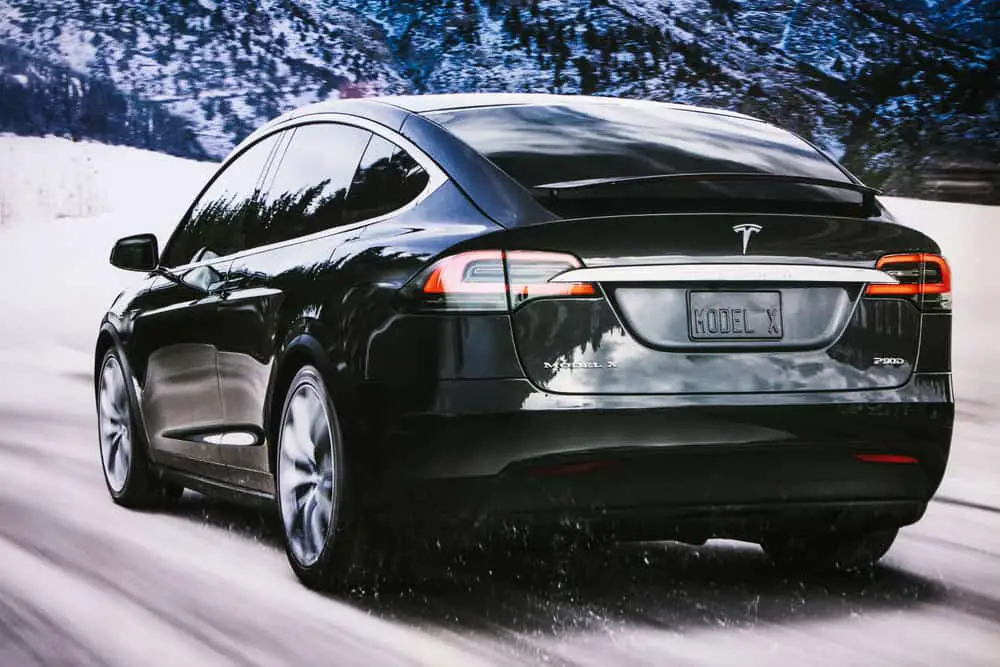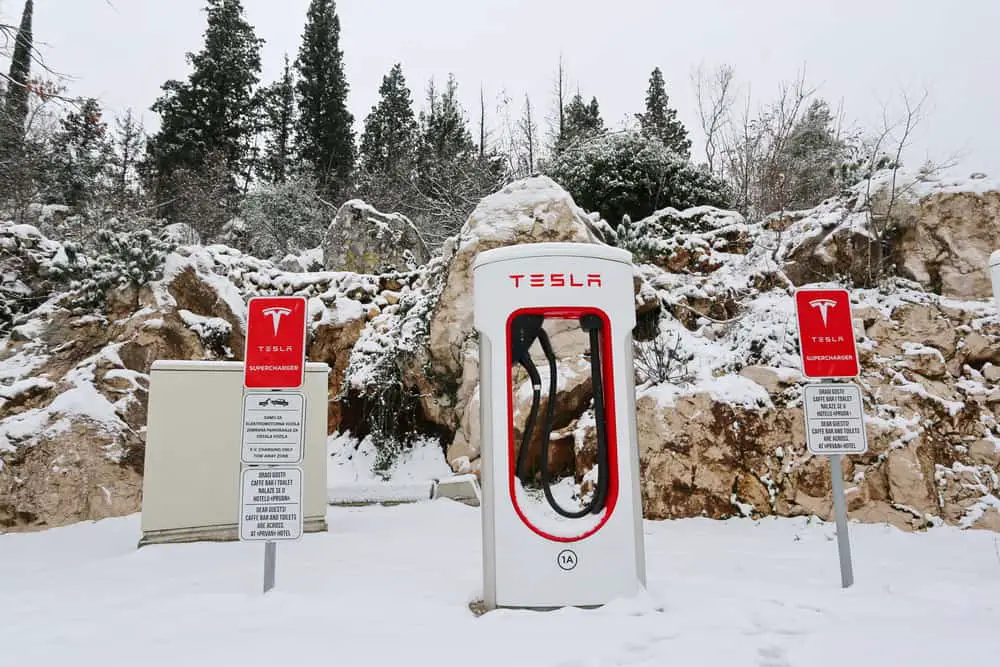Tesla is known for its cutting-edge electric vehicles. One of the main concerns for potential buyers, especially those living in colder regions, is the performance of these vehicles in snowy conditions. A popular question posed is, “Is Tesla’s rear-wheel drive system good in snow?”
Quick Answer:
While Tesla’s rear-wheel drive models can manage in snow, it largely depends on driver skill and tire choice. Snow tires enhance traction significantly. Tesla’s traction control also improves handling. For frequent heavy snow conditions, Tesla’s all-wheel drive models, providing power to all wheels, may offer better control and stability.
In this article, we will explore the effectiveness of Tesla’s rear-wheel drive models in snowy conditions, comparing them with all-wheel drive options and examining factors like tire choice and vehicle technologies in handling such scenarios.
Tesla’s rear-wheel drive configuration is not the only option available to consumers. Tesla also offers the dual-motor all-wheel drive setup in some of its models, designed to provide improved traction.
Nevertheless, the rear-wheel drive system can still perform adequately on snowy roads as long as the users take appropriate precautions and understand the limitations.
Overview of Tesla Rear-Wheel Drive
Tesla Models with RWD
Tesla offers various electric cars, and some of its models come with a rear-wheel drive (RWD) system. The most notable RWD Tesla vehicle is the Tesla Model 3 Standard Range Plus. This configuration has a single electric motor that powers the rear wheels, providing efficient performance and handling.
Understanding RWD System
Rear-wheel drive systems, like those found in some Tesla electric cars, are designed to distribute power to the rear wheels, which helps with acceleration and overall performance. Compared to front-wheel drive systems, RWD generally offers better balance and weight distribution, making the car more stable and enjoyable to drive.
However, RWD systems may have some disadvantages in snowy or slippery conditions. Without all-wheel drive or a front-wheel drive system, the car relies solely on rear-wheel traction.
This can be challenging when driving on slippery or snow-covered roads, but various factors, such as all-season tires and driving techniques, can alleviate these challenges. Driving a Tesla RWD vehicle in snow may require additional caution and awareness compared to AWD or FWD cars.
Despite the potential drawbacks in snowy conditions, a Tesla RWD, like the Model 3 Standard Range Plus, provides an enjoyable driving experience with efficient performance and handling.
Using an electric motor to power the rear wheels contributes to the overall appeal of Tesla’s lineup of electric vehicles (EVs). Tesla continues to be a leader in the EV market and offers various options for car buyers to experience the benefits of electric cars, RWD included.
RWD Performance in Snow and Ice Conditions
Traction and Stability
Rear-wheel drive (RWD) cars can offer good performance in snow and ice conditions; however, not necessarily on par with all-wheel drive (AWD) or four-wheel drive (4WD) vehicles.
Traction is crucial when driving on slippery surfaces such as snow or ice. RWD vehicles can lose traction more easily due to the weight distribution as most of the car’s weight is in the front, resulting in less force being applied to the rear wheels. This can cause the rear wheels to slip, affecting stability and control.
Acceleration and Braking
When it comes to acceleration and braking, RWD vehicles may suffer a bit in snowy conditions. Since the rear wheels are responsible for pushing the car forward, it can be more challenging to gain initial momentum during acceleration.
Likewise, braking can also be compromised as the weight shifts forward, putting more pressure on the front wheels and increasing the likelihood of skidding.
Impact of Weight Distribution and Center of Gravity
The weight distribution and center of gravity of a vehicle have significant effects on its performance in snow and icy conditions. Tesla vehicles, for instance, have a low center of gravity and more evenly distributed weight because of their battery placement.
This helps improve traction and stability in winter driving. However, it’s worth noting that these features don’t completely eliminate issues with RWD vehicles in snow and ice.
Effect of Tires on Winter Driving
Choosing the right tires for winter driving is essential regardless of your car’s drive system. Good winter tires, such as the Michelin X-Ice tires, can improve traction, braking, and overall performance in slippery conditions.
All-season tires may be adequate for mild winter weather, but they may not provide the same level of grip as dedicated snow tires in deeper snow and icy conditions. It’s important to remember that even with proper tires, RWD cars should still be driven cautiously in snow and ice to ensure safety and optimal performance.
Comparison with Alternative Drivetrains
Tesla’s AWD System
Tesla’s All-Wheel Drive (AWD) system, known as Dual Motor, evenly distributes torque between the front and rear wheels. This configuration provides better traction and stability control in various driving conditions, including snow. The electric vehicle powertrain ensures adequate battery usage and offers a more enjoyable driving experience.
Front-Wheel Drive
Front-Wheel Drive (FWD) vehicles allocate torque to the front wheels. They are common in sedans, hatchbacks, and some sports cars. While these models tend to be more fuel-efficient, they may struggle in snow compared to AWD or 4WD systems due to less traction control.
However, many FWD vehicles feature advanced traction and stability control systems, which can help improve their performance in snowy conditions.
Four-Wheel Drive Vehicles
Four-Wheel Drive (4WD) systems are typically found in SUVs, trucks, and off-road vehicles. They provide torque to all wheels, enabling excellent traction in various terrains, including snow. 4WD systems often come with manual or automatic settings, allowing the driver to adjust based on driving conditions.
Though these vehicles can be bulky and consume more fuel, they offer high stability and traction control, making them suitable for snowy conditions.
AWD and 4WD systems both have advantages and disadvantages when it comes to driving in snow. Tesla’s AWD system in electric vehicles delivers precise torque distribution and effective traction control, which can enhance the driving experience and offer substantial stability in slippery conditions.
Preparing Your Tesla RWD for Winter Driving
Recommending Winter Tires
Swapping your all-season tires for winter tires is crucial to maximizing your Tesla RWD efficiency during snow conditions.
Winter tires provide better traction in snow and ice, which translates into improved handling and braking performance. Available not just for the sports sedan but also for other vehicles or any all-wheel-drive system-equipped car, having these tires hugely benefits drivers.
Despite Tesla RWD vehicles being equipped with advanced traction control systems, these systems rely on the tires’ grip on the road to function effectively. As such, additional grip from winter tires contributes immensely to the overall performance in winter conditions.
Proper Vehicle Maintenance
Keeping your Tesla RWD in top condition is the key to experiencing a smooth drive during winter. To do this, follow these simple yet effective measures:
- Check the battery: Cold temperatures can affect battery performance, resulting in reduced range. Ensure your battery is in good condition, and consider pre-conditioning before leaving home to preserve battery life.
- Inspect the brakes: Proper functioning of the brakes is critical for safety reasons. Inspect the brake pads for wear and ensure there is no build-up of snow or ice, which could impact their effectiveness.
- Maintain fluid levels: Regularly check and top up essential fluids such as coolant, windshield washer fluid, and brake fluid during the winter months.
- Clean and protect: Regularly wash your Tesla RWD to remove road salt and grime that can lead to corrosion. Applying a layer of wax or paint sealant can provide additional protection against winter elements.
By following these recommendations, you can enhance your Tesla RWD’s performance during winter driving.
Make sure to prioritize winter tires and proper vehicle maintenance to ensure safety and enjoy a comfortable ride in snowy conditions.



